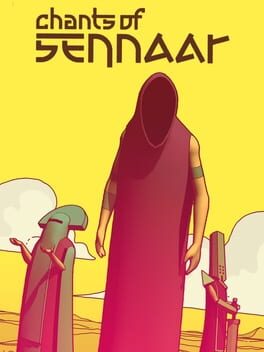fiokka
Chants of Sennaar 2023
Log Status
Completed
Playing
Backlog
Wishlist
Rating
Time Played
10h 0m
Days in Journal
1 day
Last played
June 8, 2024
Platforms Played
In a highly complimentary way, Chants of Senaar almost feels like a demo to a larger, more intricate language-translation concept, a new kind of gem that's just been unearthed, not fully realized in all its facets. Which isn't to say the game feels unfinished, but Rundisc's first foray into this genre is rife with potential.
I'm coming to love the growing Metroidbrainia genre more and more, and Chants is a very worthy addition. The best of these genres start you with little to no context for your actions, but cleverly guide you along a path where you're constantly encouraged to make your own connections and deductions... and what could represent connection better than language itself?
Visually the game is lovely, but unfortunately so enamored with its own beautiful austerity that it becomes responsible for my largest issue with the game: traversal. Combing over the same areas highlights how much of the game is ambling across a tasteful artistic landscapes of sparse shape and color, slowly plodding across the screen across a vista of cold blue or dingy yellow. At one point the player is presented with a labyrinth area in the most tortuously unnecessary parade of dozens of nearly identical empty rooms to slowly hoof your way from end to end to.
Speaking of tortuously unnecessary, the game also contains very ill-advised mandatory stealth sections, which, while forgiving, elicit a groan once you've seen your third. I appreciate the developers wanting to impress a feeling of danger and tension, but who is looking for this in their translate-language game?
Still, I never once considered giving up. The reward of syncing new glyphs in your journal, of making educated guesses more than made up for some clumsy traversal. It's strongly recommended you keep your own handwritten journal--although it would have been nice if the game journal was made a bit more robust with deduction features, like being able to link glyphs together to try and suss out patterns.
As I arrived to the ending, I did find it didn't quite hold up against the rest of the game. You feel the moment the developers decide it's time for the obligatory indie 'meaningful themes about the transcendence of interconnectivity' hat to go on, and so the actual gameplay takes a backseat to this. Still, it's well-paced and well-executed, and the game never overstays its welcome. I hope we see this game continue to inspire other creators.
I'm coming to love the growing Metroidbrainia genre more and more, and Chants is a very worthy addition. The best of these genres start you with little to no context for your actions, but cleverly guide you along a path where you're constantly encouraged to make your own connections and deductions... and what could represent connection better than language itself?
Visually the game is lovely, but unfortunately so enamored with its own beautiful austerity that it becomes responsible for my largest issue with the game: traversal. Combing over the same areas highlights how much of the game is ambling across a tasteful artistic landscapes of sparse shape and color, slowly plodding across the screen across a vista of cold blue or dingy yellow. At one point the player is presented with a labyrinth area in the most tortuously unnecessary parade of dozens of nearly identical empty rooms to slowly hoof your way from end to end to.
Speaking of tortuously unnecessary, the game also contains very ill-advised mandatory stealth sections, which, while forgiving, elicit a groan once you've seen your third. I appreciate the developers wanting to impress a feeling of danger and tension, but who is looking for this in their translate-language game?
Still, I never once considered giving up. The reward of syncing new glyphs in your journal, of making educated guesses more than made up for some clumsy traversal. It's strongly recommended you keep your own handwritten journal--although it would have been nice if the game journal was made a bit more robust with deduction features, like being able to link glyphs together to try and suss out patterns.
As I arrived to the ending, I did find it didn't quite hold up against the rest of the game. You feel the moment the developers decide it's time for the obligatory indie 'meaningful themes about the transcendence of interconnectivity' hat to go on, and so the actual gameplay takes a backseat to this. Still, it's well-paced and well-executed, and the game never overstays its welcome. I hope we see this game continue to inspire other creators.
